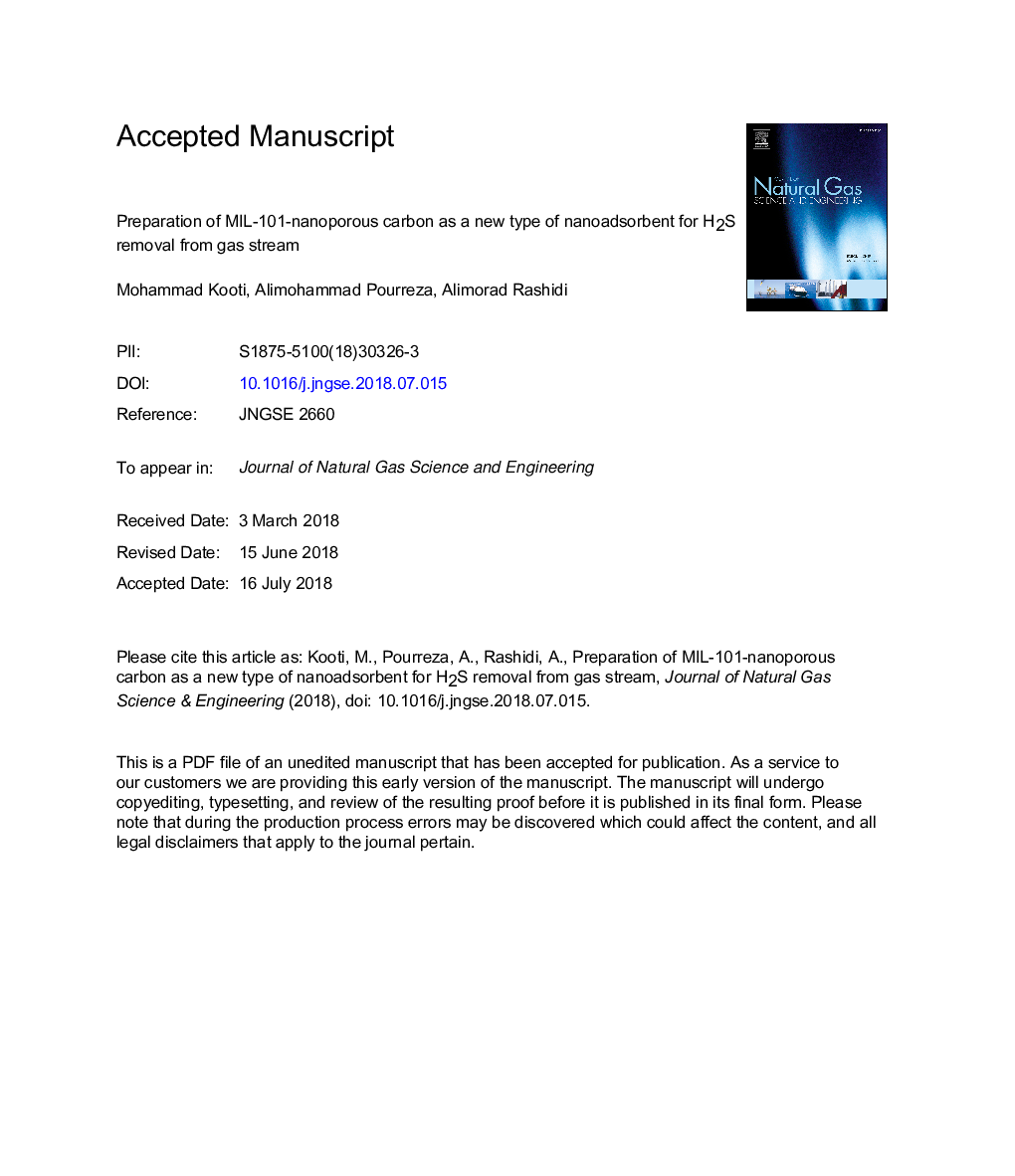| Article ID | Journal | Published Year | Pages | File Type |
|---|---|---|---|---|
| 8127824 | Journal of Natural Gas Science and Engineering | 2018 | 23 Pages |
Abstract
In the present study, based on hydrothermal reaction, new hybrids containing metal organic frameworks MIL-101 (Cr) and nanoporous carbon (GCKP2) in different ratios from 10 to 50% were synthesized. The common methods such as Fourier transform infrared (FT-IR), thermogravimetric analysis (TGA), Field Emision Scanning Electron Microscopy (FE-SEM) and N2 adsorption-desorption were used for characterization of these hybrids. The prepared materials were accordingly employed as adsorbent for H2S removal process and the results showed adsorption of 10, 6.2, 7.9, 6.0â¯mmol/g at pressure around 9â¯bar for MIL-101, hybrids containing 10%, 30%, and 50% of nanoporous carbon, respectively. Furthermore, the adsorption equilibrium isotherms were used to describe the experimental data and the Langmuir-Frendlich equation appeared to provide a better fit for the H2S adsorption by all synthesized hybrids. Relatively high H2S adsorption capacity, easy and safe handling, and scalable use are some of the advantages of the present nanoadsorbents.
Related Topics
Physical Sciences and Engineering
Earth and Planetary Sciences
Earth and Planetary Sciences (General)
Authors
Mohammad Kooti, Alimohammad Pourreza, Alimorad Rashidi,
